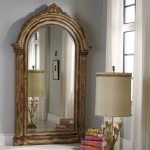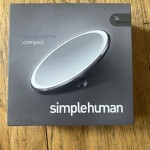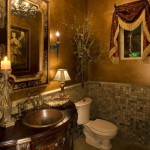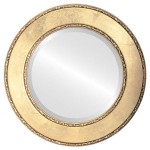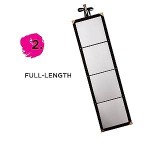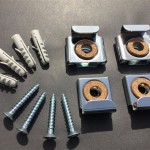Can Convex Mirrors Produce Inverted Images?
Convex mirrors are known for their ability to provide a wide field of view, making them useful in various applications like security mirrors and car side mirrors. A common characteristic of the images they produce is that they are upright and smaller than the object. This raises the question: can convex mirrors ever produce inverted images?
Understanding Image Formation in Convex Mirrors
Image formation in convex mirrors is governed by the laws of reflection. Light rays emanating from an object diverge upon striking the curved reflecting surface of the mirror. These diverging rays are then extended backward, virtually, behind the mirror. The point where these virtual rays intersect forms the image.
Due to the diverging nature of reflected rays, the image formed by a convex mirror is always virtual, meaning the light rays do not actually converge at the image location. This virtual image is located behind the mirror's surface. Furthermore, the image is always diminished in size compared to the object and upright, meaning it has the same orientation as the object.
The Role of Focal Length and Object Distance
The focal length of a convex mirror is a crucial factor in image formation. It is defined as the distance between the mirror's surface and its focal point, where parallel light rays appear to converge after reflection. The focal length of a convex mirror is always negative, reflecting the diverging nature of the reflected rays.
The object's distance from the mirror also plays a significant role. Regardless of the object's position in front of a convex mirror, the image will always be virtual, upright, and diminished. As the object moves closer to the mirror, the image also moves closer to the mirror and increases slightly in size, although remaining smaller than the object.
Real Images and Inverted Images
A real image is formed when light rays actually converge at a point. This can be projected onto a screen. Inverted images are those that appear upside down relative to the object. Real inverted images are typical of concave mirrors under specific object-distance conditions.
The Case of Convex Mirrors and Inverted Images
Given the properties of convex mirrors and their diverging reflected rays, producing a real image is impossible. Since inverted images are typically associated with real images, particularly in the context of spherical mirrors, a convex mirror cannot produce an inverted image under normal circumstances.
The Theoretical Exception: A Virtual Object
A theoretical exception arises when considering the concept of a virtual object. A virtual object is not a physical object but rather the image formed by another optical element, such as a lens. If a converging lens forms a real image and then a convex mirror is placed in the path of those converging rays before they fully converge, the convex mirror will treat this converging point as a virtual object.
In this specific scenario, if the converging rays from the lens are focused beyond the center of curvature of the convex mirror, the convex mirror can form a real, inverted image. This is because the converging rays from the lens effectively act as if originating from a point behind the mirror. This scenario, however, involves a complex optical system and does not contradict the fundamental property of convex mirrors not forming inverted images from real objects placed in front of them.
Practical Applications and Limitations
The typical application of convex mirrors relies on their ability to produce a wide field of view, showing an upright, diminished image. This makes them ideal for safety and security applications. The inability to form inverted images is not a limitation in these contexts but rather a defining characteristic aligned with their intended use.
Summary of Image Formation by Convex Mirrors
To summarize, convex mirrors, under standard conditions with real objects placed before them, always produce virtual, upright, and diminished images. The diverging nature of reflected rays prevents the formation of real images, which are a prerequisite for inverted images in the context of spherical mirrors. While a theoretical exception exists using virtual objects created by other optical components, this scenario doesn't alter the fundamental properties of convex mirrors in typical applications.

Question Recalling Whether The Image Produced By A Convex Mirror Can Be Inverted Nagwa
Can A Convex Mirror Form Magnified Image Quora
Can Convex Mirrors Produce Lateral Inversion Quora
Can A Convex Mirror Produce Real Image
Is It Right A Convex Mirror Always Forms An Inverted Image Quora
Can A Convex Mirror Produce Real Image When The Object Is Virtual And Vice Versa Concave If Yes How Will It Be Possible Why Quora
Can Convex Mirrors Produce Lateral Inversion Quora

Can A Convex Mirror Produce Real Image When The Object Is Virtual And Vice Versa Concave If Yes How Will It Be Possible Why Quora
Can A Convex Mirror Form Real Image Quora
Can Convex Mirrors Ever Produce Real Images Inverted Magnified Quora


